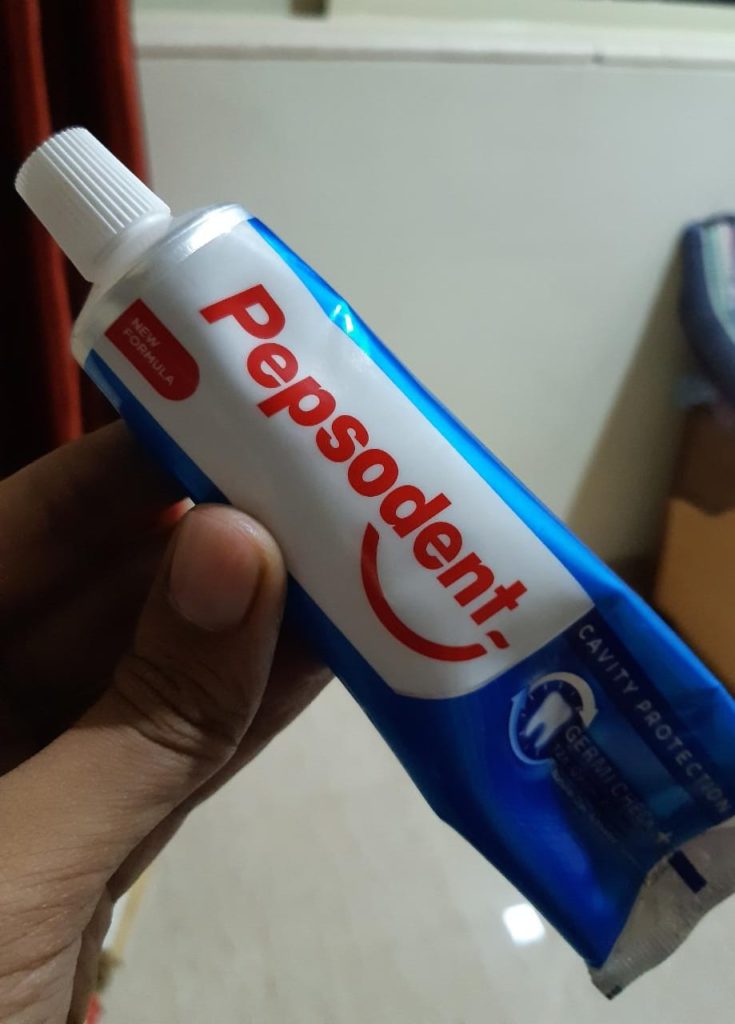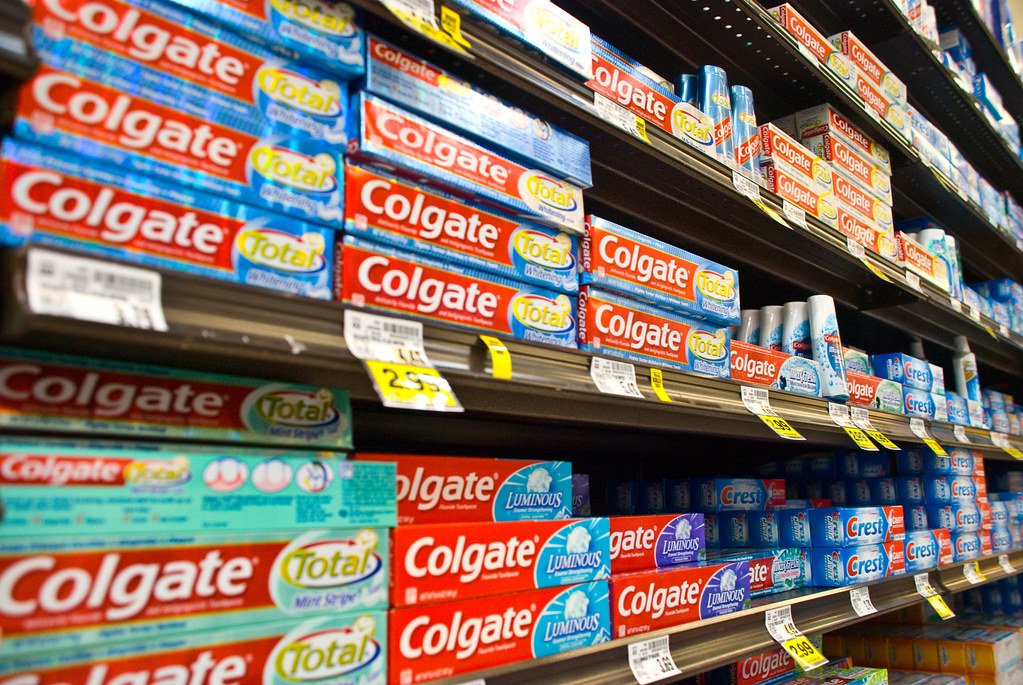Colgate has more number of ads than it has unique products. And by products here, I mean the different types of toothpastes it manufactures. So does Pepsodent or Sensodyne or Meswak or Anchor or Ajay. (Who in the world brands a line of dental care products as Ajay?) There’s Vicco too. What about Babool or Aquafresh? There are plenty of toothpaste brands in India alone and the problem I have with them is the different versions of toothpastes.
A toothpaste is like coconut water; there’s just one type of it. Variation in its chemical formula may have some benefits or disadvantages but the basic idea and application remain the same. So, my question is: when a toothpaste brand launches a new toothpaste (say, something like ‘for sensitive teeth and gums’) does it render its previous products useless?
How is an average toothpaste user like me supposed to decide what toothpaste to go for? Why are there so many different types when everyone in the world need just one type? The type that cleans and disinfects their teeth and other parts of their mouth and protects them from germs and other forms of decay.
Toothpaste TVCs Don’t Care
I don’t usually watch television but when I do loud advertisements of people staring at or smelling the oval basin water closet receptacles of their neighbor’s toilet and then giving a high-five to their little ones flash in front of me. Or it is a couple resurrecting a dead cockroach in ad about anti-cockroach sprays. Or it shows voluptuous women falling for men who use a specific brand of deodorant, which of course, does not have gas. It just adds to the reasons why I don’t usually watch television.
But the most bizarre yet veritable commercial that I have seen is that of another toothpaste brand called Parodontax. It has the screen split into two. In the first, a person spits his brushed foam into the wash basin with a smudged red spot, while on the other the foam is spotless white. The ad ends with the conclusion that the toothpaste can help you overcome bleeding gums or some other organ that has the ability to bleed. Quite innovative, I should say.
In another toothpaste television commercial, a dentist father and his daughter are living in separate houses. But they are bonded together by their choice of toothpaste. Another one teaches you to brush twice a day, floss everyday[1]There’s no proof that dental floss helps in preventing gum diseases and cavities. The medical fraternity, however, refuse to believe so. (Medical benefits of dental floss unproven – Jeff Donn, The Associated Press, 2 August 2016), clean your tongue everyday and soft-sells its latest toothpaste sub-brand. Or consider the one which asks you to brush with high speed without thinking about the cleanliness. The ads are just beyond realism and borderline funny-slash-ridiculous these days.
The point I’m trying to make is how different brands have different types of toothpastes but no clarity on which one’s the best or most effective. For the sake of an argument, do you think Ajay the toothpaste brand can tell us which one is the best toothpaste out of the lot? If it can, what does it have to say about other toothpaste sub-brands that it manufactures?
I understand the types which are meant for sensitive teeth, but what about for someone who has normal teeth and gums? For instance, Colgate has five different types of toothpastes. According to their television advertisements, some of these will help you open your mouth wide to a stranger and make that stranger fall in love with you; some will help you brighten your teeth so that you can throw away all the light bulbs in your house (to borrow from a similar legendary ad by Happydent; some will have particles that do flossing, rinsing, and blanching and thereby turning your teeth into the whitest of white; some will have robots installed inside your mouth so you don’t smell like an open dustbin and trouble your boss and his hot assistant with halitosis. All these types, endorsed by actors, some of whom can’t get movie deals, have always baffled me. None of them give me an answer to the simple question: which toothpaste should I buy when I’m doing my monthly shopping at DMart? Should I stick with the one that I have been using since I was a child (the basic Germi Check+ one with pinkish white tone by Pepsodent)? What are these ads telling me? If they are not able to convince a regular toothpaste user like me who has recently started to brush twice a day to try out their new toothpaste sub-brands what is the point?

How Am I Supposed to React?
Let’s take the help of imagination to understand how these toothpaste ads should ideally be perceived by the aam junta.
Pankaj was using Colgate Max Fresh till the time a lady and her entourage of cameramen barged into the bathroom of his rented Mumbai apartment with a mic while he was brushing. After going through the ingredients listed on the backside of his toothpaste pack, he surrendered to them for not having salt in his toothpaste. He even blamed his mother in vain for not having done the shopping right because she evidently had brought the same old toothpaste they had been using since last December. Instead she spiraled into a reverie thinking how on earth did the lady and her team get in.
It was only a few months ago that Pankaj had stopped using Colgate Active Salt and changed to Colgate Total (before opting for the Max Fresh) which was suggested by her sister, judging the paste solely based on the moniker suffix. Then, few days later after the woman had barged into her bathroom, he bought Colgate Visible White to turn his teeth into pearl whites. Sonam Kapoor had made him believe in the toothpaste and today his teeth looks the same they were when he was on Miswak which the family had been using since 1997 when they migrated from Ahmedabad to Mumbai.
A few days later, Pankaj’s mother saw another advertisement, this time talking about the significance of having charcoal in it. To Pankaj’s amusement and subsequent irritation, he saw Ajay toothpaste in his bathroom the following day. The story goes on as long as there are toothpaste commercials.
Conclusion
All I want for these brands to do is clarify when releasing new products what consumers are supposed to do with their current toothpaste type, especially if they are from the same brand. Each new release has something new, something more, or something less in comparison. How do these variations fare when they are made to showcase their strengths and weaknesses? It seriously baffles me and I know taking toothpastes so seriously is bad for my mental health. But I can’t help it, considering how toothpaste commercials now pop up on mobile screens as well.
In an ideal scenario, ignoring whatever business models they are running on, brands should only manufacture a single type of toothpaste and if it wants, it can release new versions every few years. Just like cars and smartphone makers where they eventually say goodbye to older models. But toothpastes directly affect their customers’ dental health, so I expect a little bit of sensitivity on their part. Not talking about Sensodyne here, but the presence of a a bit of responsibility on the part of companies that own and market brands like Colgate (Colgate-Palmolive), Pepsodent and Close-Up (Unilever), and Aquafresh (GlaxoSmithKline) is expected especially when things are not looking for cash-hungry, new-gen apps like Zomato that directly affect my main health.[2]But as someone who has lived for more than two decades, I can attest that dental and general health go hand-in-hand.
I should probably stick with Pepsodent or start using Ayurvedic ones like Meswak, Babool, Dabur Red, or Vicco. At least I don’t think they have types. Did you know Crest and Oral-B make toothpastes too? But their toothbrushes are more popular. And those have different types too. TN.
Featured image courtesy: “Toothpaste anxiety” by Kevin McShane/Flickr via Creative Commons (apparently Kevin and I share this issue)
Update: fundamental copyedit; added image of my toothpaste; added featured image; added better conclusion. (19 September 2019)
Footnotes
